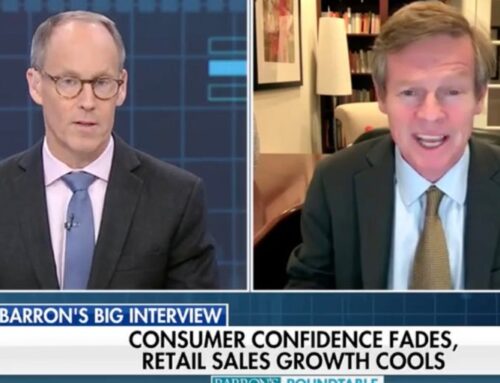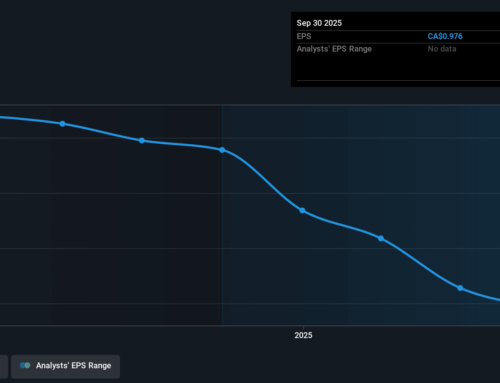Forget 60/40. BlackRock’s Larry Fink wants investors to embrace 50/30/20.
April 2, 2025
BlackRock Chief Executive Officer Larry Fink is proposing a new tweak to an age-old investing formula.
Instead of a traditional 60/40 split between stocks and bonds, the prominent asset manager wants everyday investors to branch out and diversify into private market assets.
“The future standard portfolio may look more like 50/30/20 — stocks, bonds, and private assets like real estate, infrastructure, and private credit,” Fink wrote in his annual letter to clients this week.
The 60/40 portfolio invests 60% of your balance in stocks and 40% in bonds. For years it has been the benchmark for many investment and retirement portfolios.
The exact asset mix depends on a variety of factors, such as your time horizon, risk tolerance, and financial goals. And it’s designed for the long haul. You’re not tapping into it to cover your expenses for next year.
The 60/40 portfolio has been a wildly popular ratio because it evens the teeter-totter between your risky investments and your safe investments, resulting in a portfolio with a moderate level of risk that most of us can roll with through good times and bad.
While the past few years of sweet market gains have made that blend pay off in spades, so far this year, we have been soundly reminded: Markets can and certainly do go south.
The success of the 60/40 is being tested by inflation, market uncertainty and volatility, and a “whack-a-mole” array of fiscal, trade, and policy changes.
Fink’s new hypothesis: Creating an investment portfolio that can ride out the swings may require alternatives to traditional stock and bond allocations.
“Generations of investors have done well following (the 60/40) approach,” he wrote. “But as the global financial system continues to evolve, the classic 60/40 portfolio may no longer fully represent true diversification.”
Read more: How does the traditional 50/30/20 budget rule work?
The appeal of a new asset allocation model from Fink’s lofty global vantage point: “While these private assets may carry greater risk, they also provide great benefits,” Fink wrote.
For example: The revenue that infrastructure generates — such as tolls and utility payments — typically rises along with inflation. Unlike public markets, infrastructure returns tend to be far less volatile. And historically, even allocating just 10% of a portfolio to infrastructure boosts overall returns.
“But the challenge is this: The industry isn’t structured for a 50/30/20 world,” he wrote.
That’s because to invest in many of these types of private funds, investors must pony up a hefty minimum investment, say, $50,000. Moreover, investors typically must have an annual income of at least $200,000 (or $300,000 joint income) for the two previous years, as well as the expectation that income will reach the same level in the current year, according to an analysis by Amy Arnott, a portfolio strategist for Morningstar. “Investors can also be considered accredited investors if they have a net worth (either individually or with a spouse) of up to $5 million.
“Bridging the divide between the 50/30 and the 20 is almost impossible for most individuals. Even those who can afford it face another diversification problem within that 20%. Often, they barely have enough capital to meet the minimum for just one private fund — and having 20% of your portfolio locked up in a single fund isn’t really diversified.”
More than half the money BlackRock manages is retirement money, according to Fink.
So it stands to reason that he gave this advice against the backdrop that roughly a third of Americans have no retirement savings, according to a BlackRock survey, and more than half are more worried about outliving their savings than death itself.
Ultimately, Fink’s reading of the tea leaves suggests something has to be done to make it easier for individual investors to create retirement wealth because Social Security isn’t going to sustain those facing longer lifespans.
According to the US Census Bureau, Social Security keeps nearly 30 million Americans from sliding into poverty each year — an extraordinary achievement, he wrote. And yet, projections show Social Security’s retirement and disability funds will run out by 2035. After that, people would get only 83% of their promised benefits, and that percentage will drop over time.
Enter private assets, Fink argues, pointing out that pension funds have invested in them for decades, but 401(k)s haven’t.
“It’s one reason why pensions typically outperform 401(k)s by about 0.5% each year. Half a percent doesn’t sound huge, but it adds up over time,” he wrote.
BlackRock estimates that over 40 years, an extra .5% in annual returns results in 14.5% more money in your 401(k).
“Put another way, private assets just bought you nine extra years hanging out with your grandkids,” he wrote.
Read more: Retirement planning: A step-by-step guide
You might be scratching your head and thinking, if private assets perform so well, why aren’t they in your 401(k)?
Private assets are legal in retirement accounts, Fink wrote, but they’re unfamiliar territory for the 401(k) providers who select the investments offered in workplace plans.
Where to start? Target date funds, Fink suggests. Those are funds where you pick the year you plan to retire — 2040, 2055, 2060, etc. — and let the fund do the rest.
“That simplicity makes target date funds ideal for introducing private assets. The usual barriers for 401(k) providers — like daily valuations or immediate liquidity — matter far less when you’re investing over several decades,” he wrote.
I reached out to several experts to get their take on Fink’s 50/30/20 portfolio for retirement savers. Ultimately, whether or not these kinds of investments are good choices for retirement savers comes down to running the numbers and your own risk tolerance.
“Baby Finance 101 teaches diversification is great for raising risk-adjusted rate of return,” Teresa Ghilarducci, a labor economist and expert on retirement security, told me.
“But private equity comes with hefty fees,” she added, cautioning that once those fees and the added risk are accounted for, a 60/40 ratio may win the day.
That was the gist of the overall feedback: positive with a tinge of red-light caution.
“Incorporating private assets into a retirement portfolio can make sense, but they’re not right for everyone,” Ryan Haiss, a certified financial planner at Flynn Zito Capital Management in Garden City, N.Y., told Yahoo Finance.
While private equity, real estate, and infrastructure offer diversification and potential return enhancements, they come with trade-offs — primarily illiquidity and longer investment horizons, he said.
“Unlike stocks and bonds, these assets can’t be easily sold if cash is needed, making them less suitable for those with shorter time horizons,” Haiss said.
Some advisers are all in.
“I’m in agreement with this development, and in fact many of our portfolios incorporate 10% to 20% into ‘alternatives’ including private assets, real assets, and other investments that are not correlated to stock and bond markets,” Justin Smith, a certified financial planner with Savant Wealth Management in Phoenix, told Yahoo Finance
“I call this adding a third leg to the stool, to provide added stability and diversification, which is critically important for retirees who are drawing upon their portfolios.”
Fink’s suggestion is part of a growing trend, as bonds are no longer working as well as they used to as a counterbalance to stock volatility, said Kevin Gaines, a certified financial planner with American Financial Management Group in Berwyn, Pa.
“Gold, managed futures, and other ‘alternative strategies,’ including real estate and infrastructure, have been suggested to offer counter- or non-correlated diversification,” he said. “The idea behind real estate and infrastructure is that they generate steady cash flows that are less impacted than stocks by economic trends and uncertainty.”
However, interest rates can affect their value similarly to how bonds are impacted, “so they may not be as different from bonds as some investors hope,” he added.
Kerry Hannon is a Senior Columnist at Yahoo Finance. She is a career and retirement strategist and the author of 14 books, including “In Control at 50+: How to Succeed in the New World of Work” and “Never Too Old to Get Rich.” Follow her on Bluesky.
Sign up for the Mind Your Money newsletter
Read the latest financial and business news from Yahoo Finance
Terms and Privacy Policy
Search
RECENT PRESS RELEASES
Related Post




